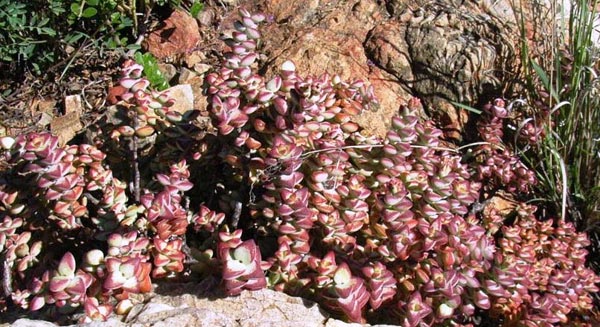|
Botanical name |
Crassula rupestris |
|
Other names |
Concertina plant; kebab bush; sosatiebos (Afrikaans) |
|
Family |
Crassulaceae |
|
Dimensions |
Small succulent bush, rounded and dense when standing alone, 15 cm high by 25 cm wide in a well-growing, mature plant |
|
Description of stem |
Many-branched, curving attractively, red-brown with grey pieces flaking, sturdy stems from which the sessile succulent leaves grow in their distinctively opposite patterns |
|
Description of leaves |
Thick fleshy with light green or yellow surface, reddish on the edges, flatter top surface whilst more rounded underneath, every opposing pair of leaves at right angles with the previous pair |
|
Description of flowers |
Clusters of pinkish white flowers on branched stems over the leaves |
|
Description of seed/fruit |
|
|
Description of roots |
|
|
Variation |
Greener in more shaded and moist positions |
|
|
|
|
Propagation and cultivation |
Grows easily from cuttings, hardy |
|
Tolerances |
|
|
Uses |
Rockery gardens or xeriscaping |
|
Ecological rarity |
Common and robust in mostly arid areas |
|
Pests and diseases |
Resistant to disease |
|
Other |
|
|
Location |
Northern slopes of arid regions, thriving in positions exposed to hot sun |
|
Distribution |
Little and Great |
|
Country |
|



